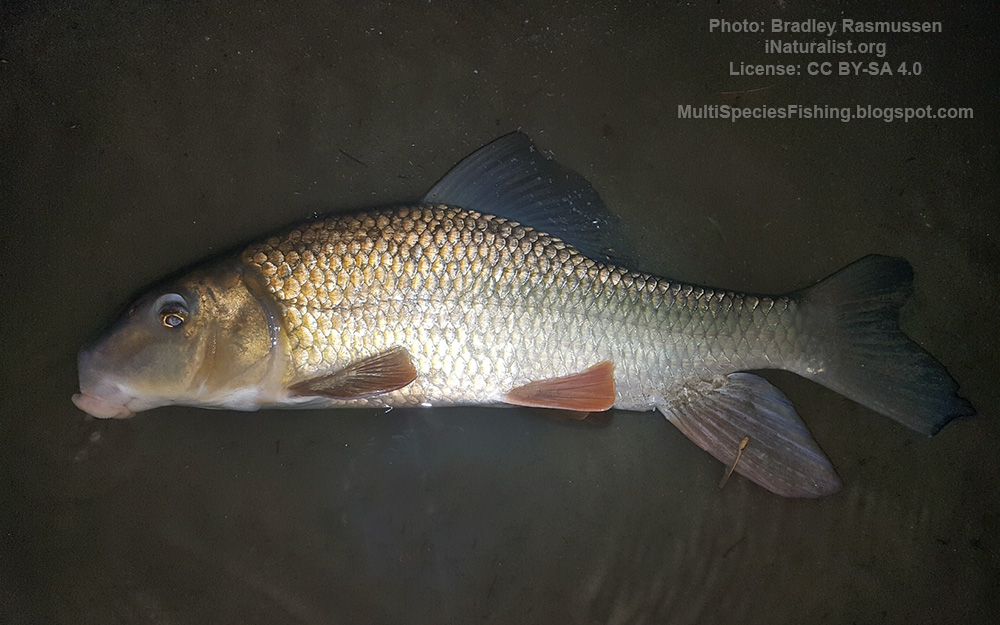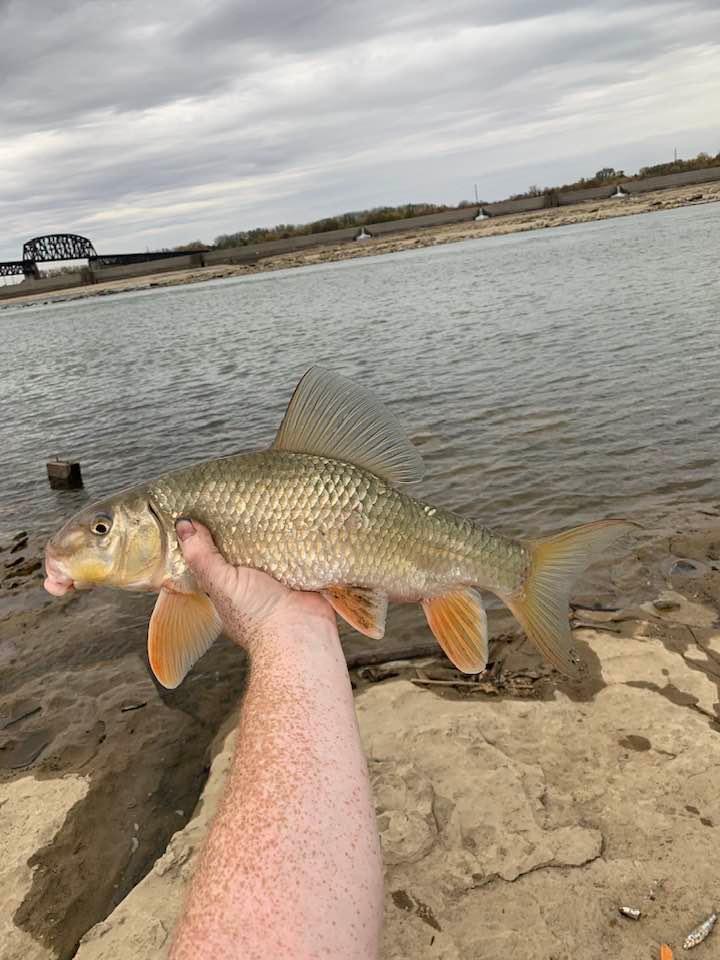Silver redhorse
(Moxostoma anisurum)

Classification
General data
The silver redhorse is a species of freshwater fish endemic to Canada and the United States. It is the longest-lived redhorse known (a group of 25 extant species), with a maximum reported age of 41 years. Sometimes called redhorse or sucker for short, it is in the family Catostomidae with other suckers.
The species is distributed from Quebec to Alberta and is also in the Mississippi River, St. Lawrence River, Ohio River, and the Great Lakes basins.
The current world record is 14 pounds, 14 ounces, caught by Chris Stephenson on Pickwick Lake in Alabama, April 1995 and certified by National Freshwater Fishing Hall of Fame. This species is of growing interest to rod-and-line anglers. The long-lived and late-maturing silver redhorse is also a sportfish pursued by kill-and-dump bowfishing, a 21st century unregulated sport that produces tons of wanton waste, and thus management and conservation are in need of updating.
The silver redhorse is silver on both sides and has a dark gray-brown back and a slate gray tail. The caudal fin is large and moderately forked. Each lobe of the fin is pointed and equal in size. On the silver sides there are 41–42 cycloid lateral line scales. The single dorsal fin does not have any dorsal spines, but instead contains 14–17 soft rays. Their dorsal fin is slightly convex (rounded outward) and is located approximately in the middle of the back.
The mouth of the silver redhorse is in the inferior position, as it is a bottom feeder. The rear edge of the silver redhorse lips forms a deep V. Because of extreme similarities, the silver red horse is commonly confused with the Black redhorse and the Golden redhorse. However, both of these redhorses have slightly concave dorsal fins (curves in toward body) with only 12-14 fin rays. Additionally the Silver red horse is more deep-bodied than the golden or black redhorse. It typically weights 2–5 pounds and measures 18-24 inches long, but it can reach up to 10 pounds and 30 inches.
Geographic distribution
The native range of the silver red horse is the Great Lakes and the St. Lawrence and Mississippi River basins. However, there have been instances in which the fish was found in Clayton lake and the New River Drainage in North Carolina. The silver redhorse is also widely distributed in eastern North America from Missouri to Quebec with most residing in the southeastern United States. It is typically found in lakes and in small to large rivers, where it often lives in undercut banks or protruding tree roots. They are also found in deep pools with little to no current and a sand substrate at the bottom of the pool useful for burying their eggs. They are a good indicator of water quality as they cannot tolerate murky water.
















